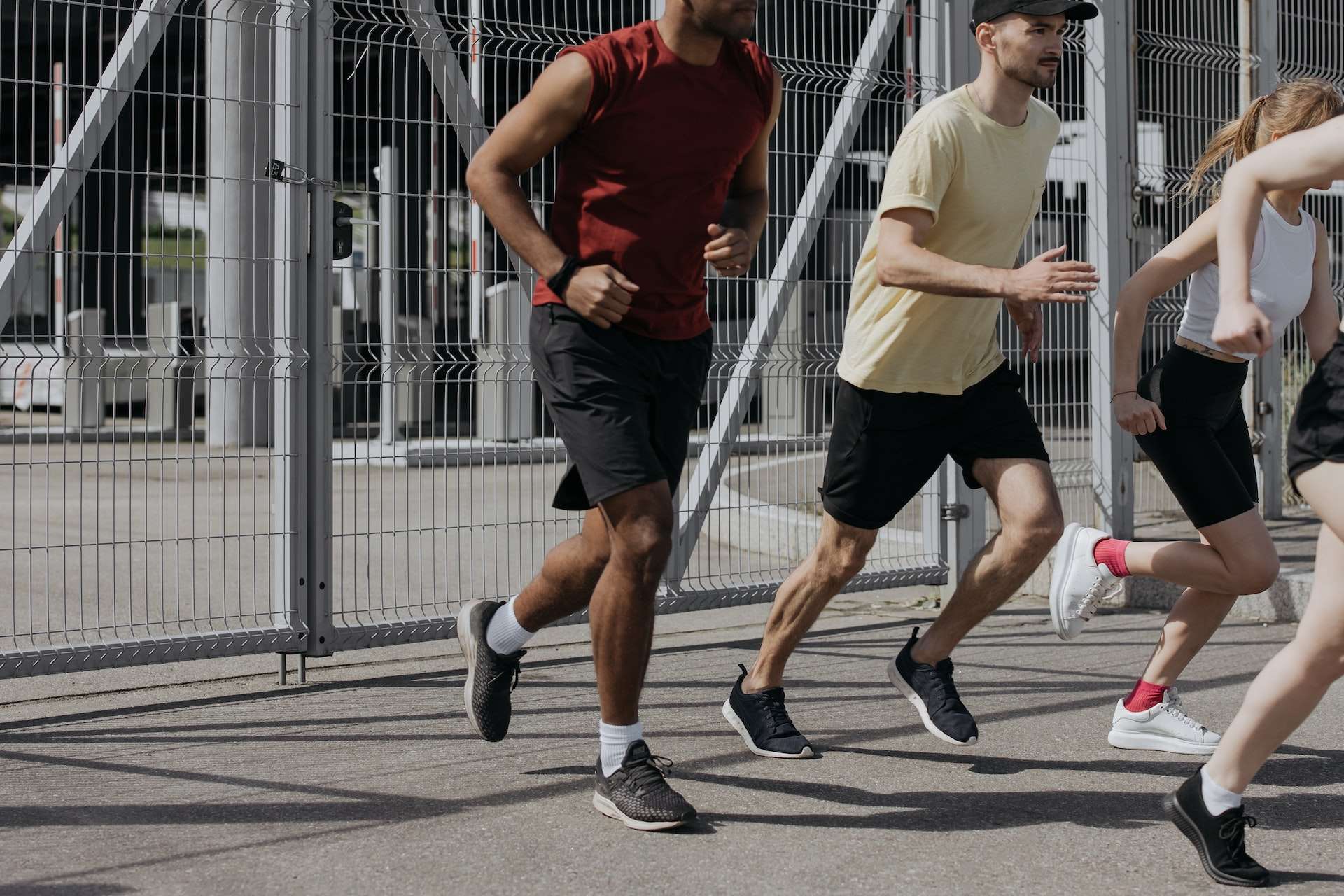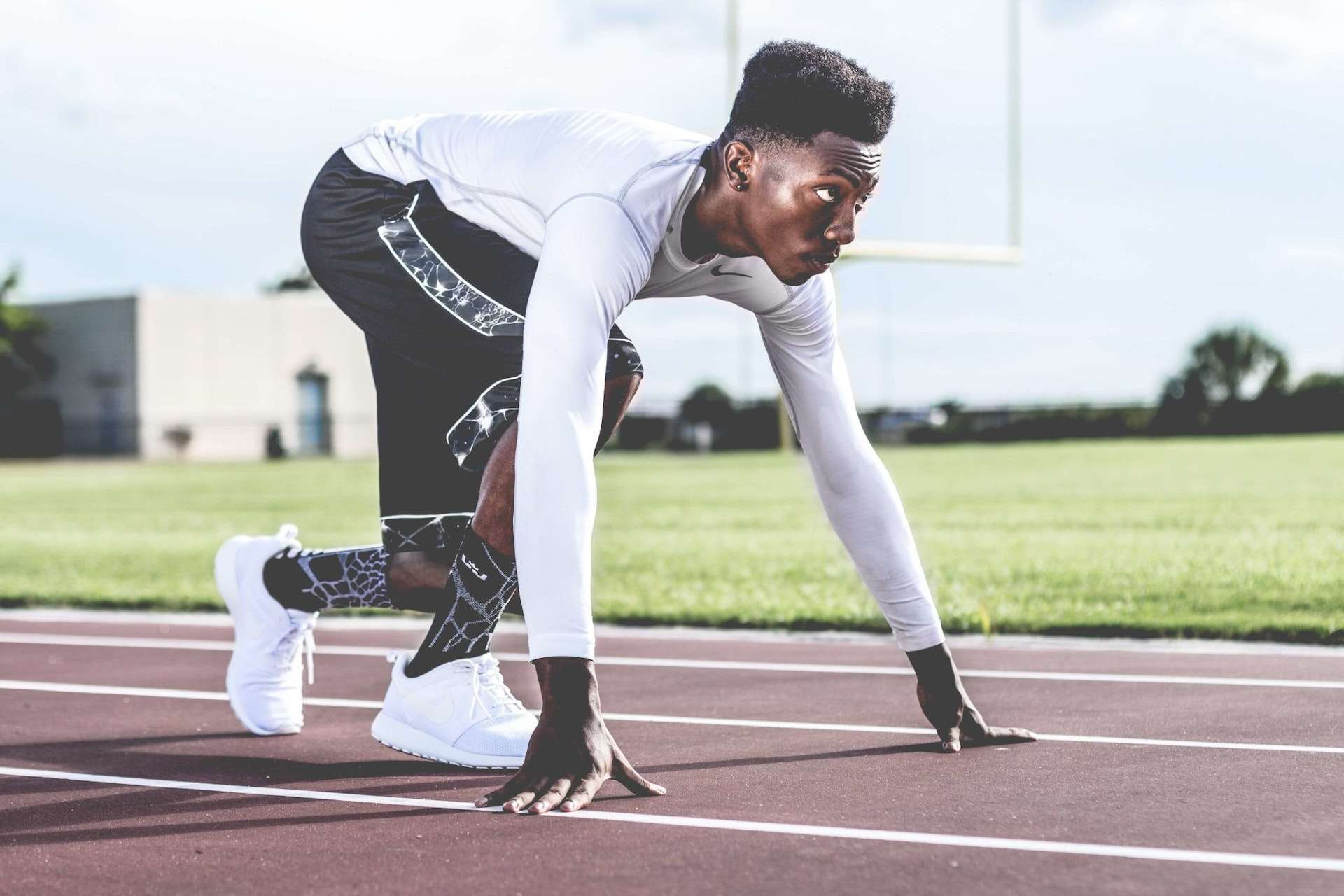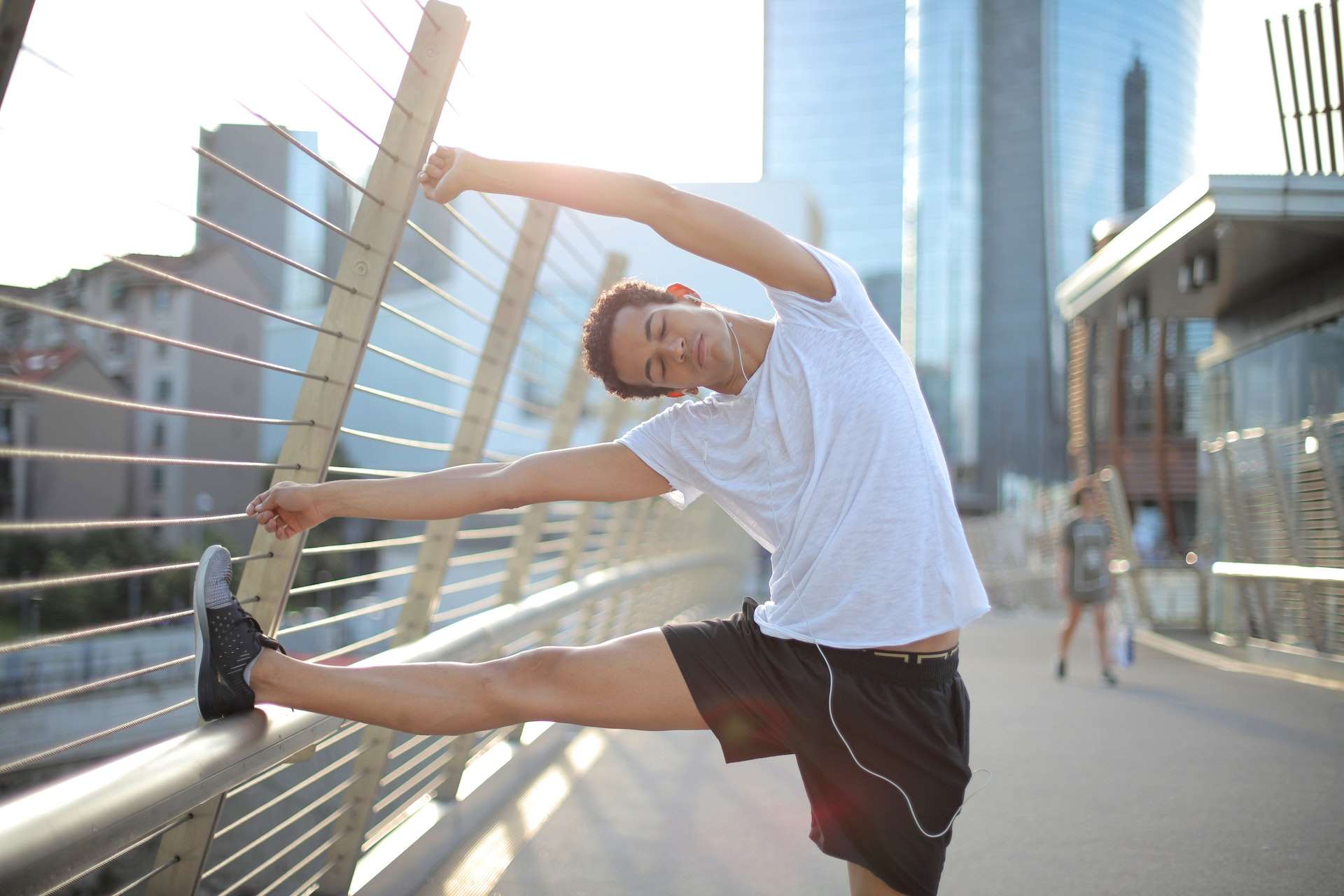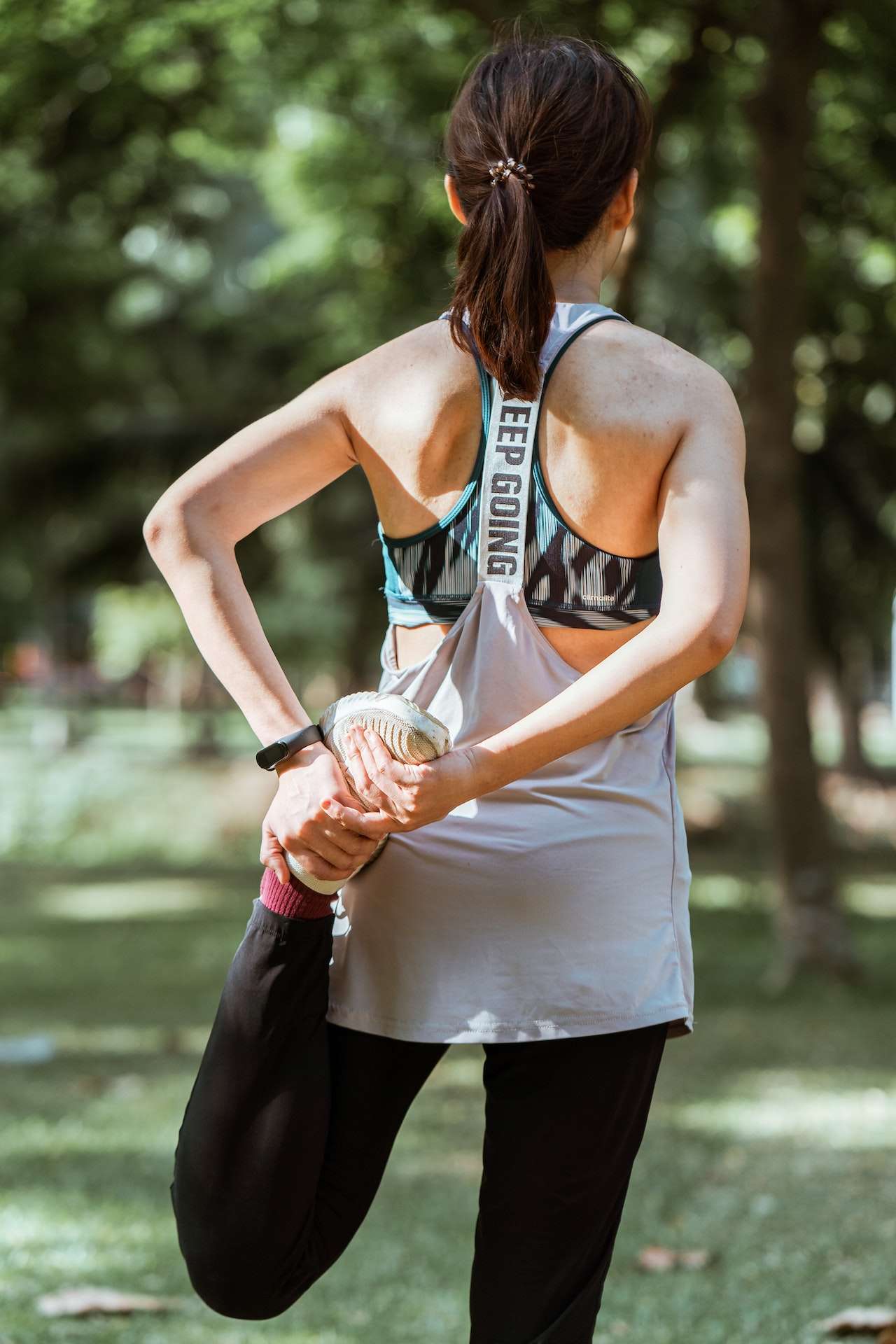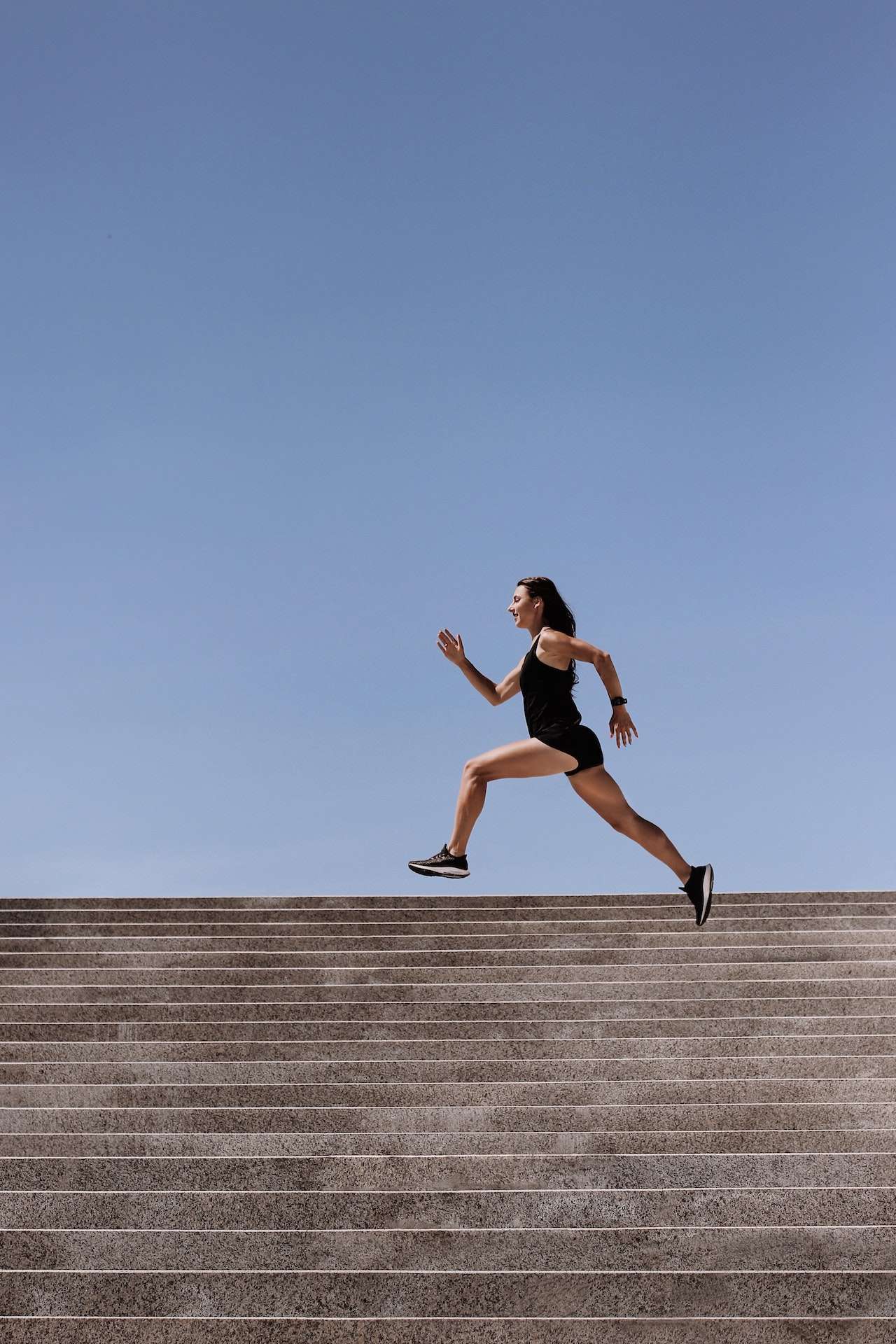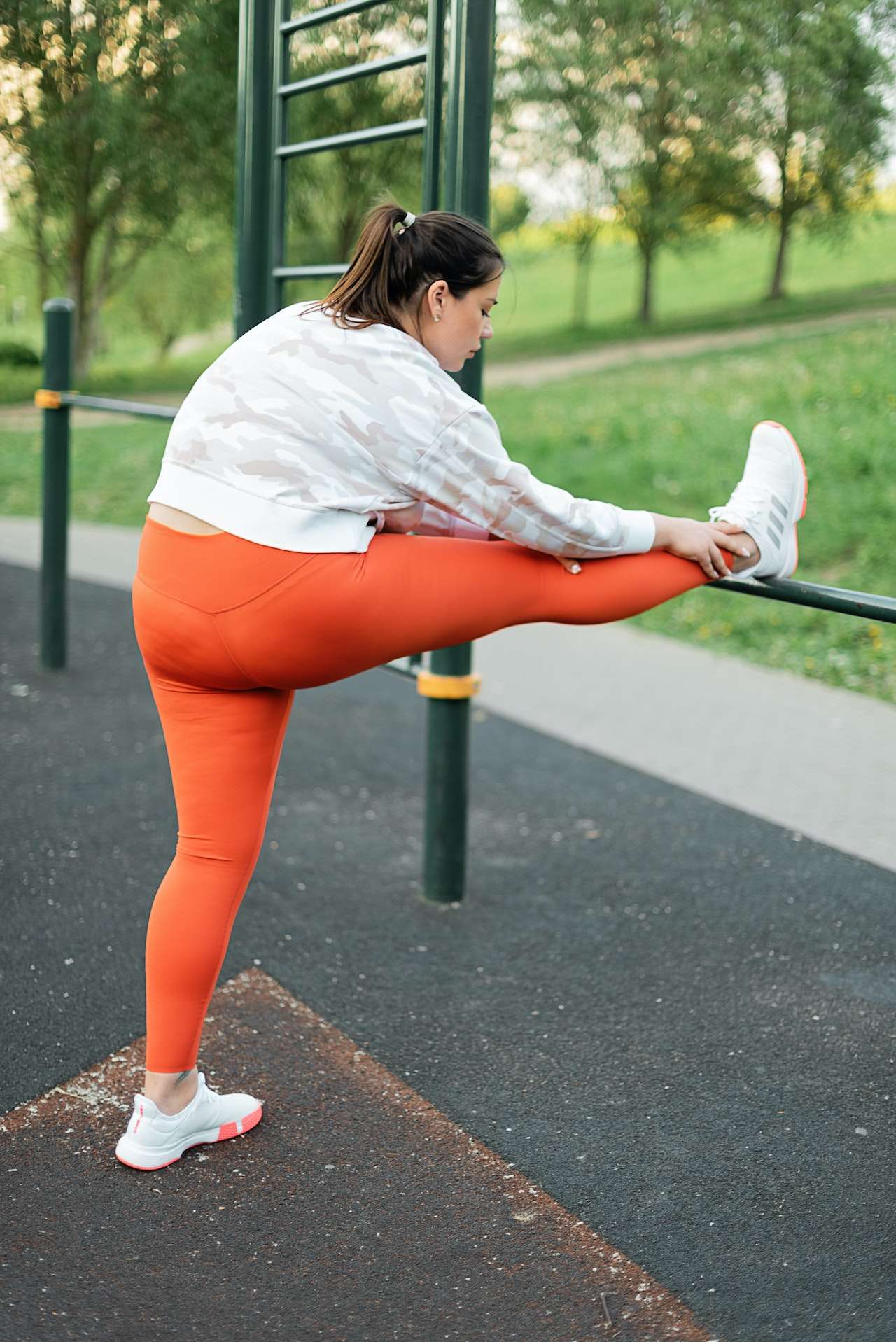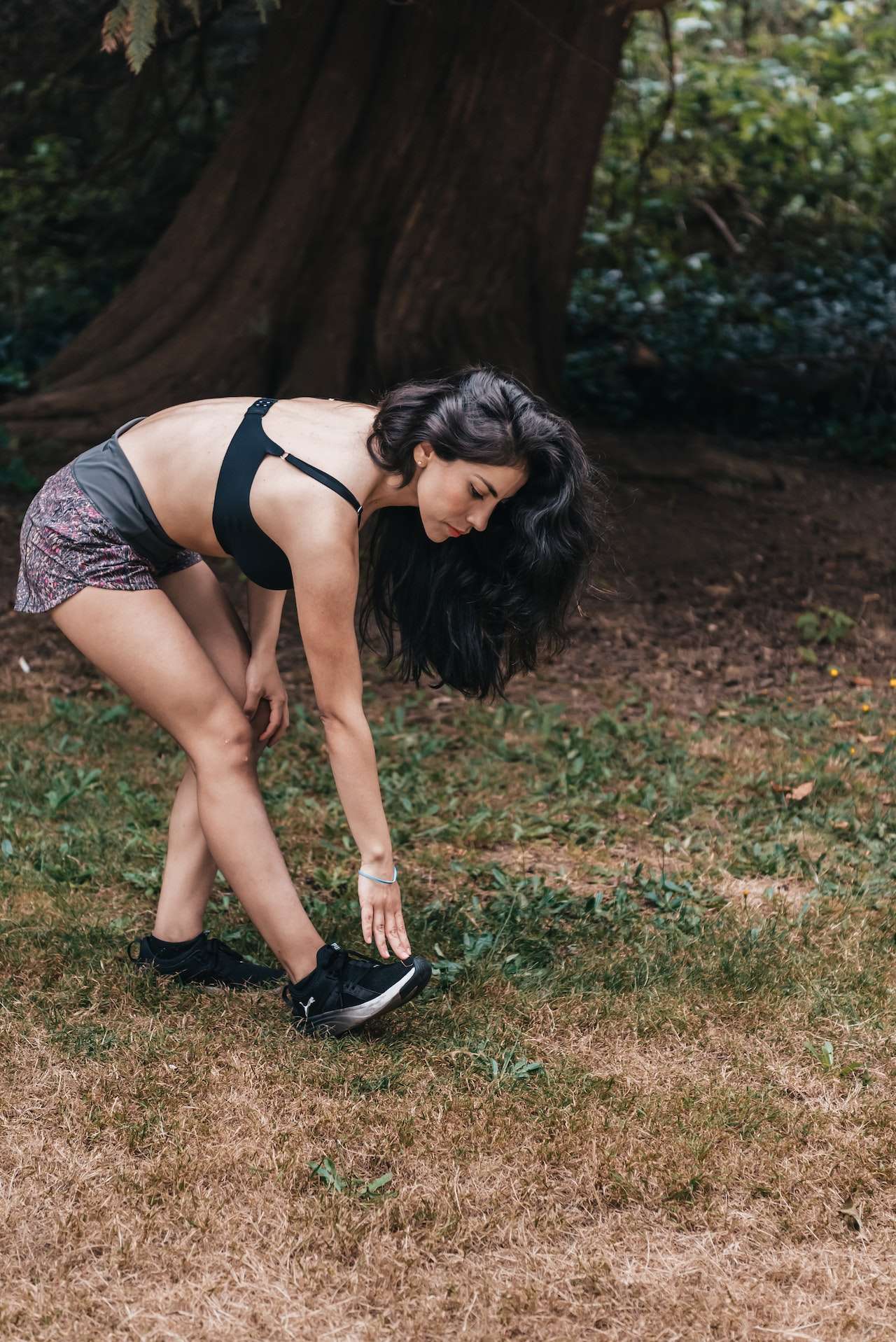|
Knee pain. It’s the bane of runners everywhere, but it doesn’t have to be that way! Please take the time to understand what common mistakes lead to knee pain and how to avoid them. In this article, I’ll show you the three most common mistakes runners make that can cause knee pain and how to fix them. Do you want to run like a gazelle, leaping over hurdles and sprinting past competitors? Or do you want to hobble around with a limp, wishing your knees weren’t so much pain? If your answer is option A, then read on! It’s never too late – or early – to take control of your running career and ensure your knees stay tip-top. The secret lies in understanding the most significant mistakes runners make regarding their knees and taking steps to correct them. I’m here to help you learn exactly what those mistakes are and how to fix them. So let’s get started…
Table of Contents
show
Over stridingRunning is a great exercise, but like all forms of physical activity, it carries the risk of injury. Over striding is one mistake that runners commonly make, which can lead to pain in the knee. This happens when a runner takes longer strides than their body can handle, putting extra pressure on their legs and knees every time they land. It’s like trying to run on stilts! Picture yourself taking a long stride and coming down hard, over and over again – your joints wouldn’t be happy about that! Over striding puts strain on the knee joint and causes it to become inflamed.
This inflammation can lead to knee pain when running, pain in the knee cap from running, pain in the back of the knee from running, or even pain below the knee from running. The symptoms of this condition are usually increased swelling and stiffness around the joint, making it difficult to bend or extend your leg while running. Sometimes, there may also be a popping sensation as you move your leg. Therefore, runners need to be mindful of their stride length and adjust accordingly to avoid an injury like a runner’s knee. Poor footwear is another common cause of knee pain when running; next, we’ll look into how choosing shoes wisely can help prevent this issue… Poor FootwearRunning is a great way to stay in shape, but if you’re not careful, it can lead to some pain in the knee when running. Poor footwear is one of the runners’ most common mistakes, and if not addressed quickly, it can result in discomfort. When wearing improper running shoes, your feet may be more prone to slipping and sliding around inside them. This can cause pressure points to form on the skin, which is quite painful. It can also cause your foot to hit the ground at an angle that puts extra strain on your knee joint. This can lead to pain in the knee when running but not walking (or vice versa), as well as pain in the knee from running shoes that are too tight or loose. Look out for knee pain from running exercises or poor form while running. Certain types of terrain might be causing pain in your knee – such as running downhill or uphill – as they both require different techniques that may tax your knees and ankles if you’re not prepared for them. Other causes of pain include pain in the back of the knee running down the calf or general fatigue caused by a lack of proper warm-up before each run. No matter what terrain you’re tackling, always wear appropriate footwear and practice good form when running to avoid any potential knee issues! That way, you’ll enjoy this activity’s benefits without any unwanted side effects like painful knees from overworking them too much. Lack Of Warm-UpIt’s easy to overlook the importance of warming up before running, but it can lead to some severe knee pain if you don’t. A good warm-up helps increase flexibility and range of motion, which can prevent painful issues like pain in the knee after running on a treadmill, pain in the knee after running with no swelling, pain in the knee after running a few miles, pain in the knee after running not during, and even sharp pain in the knee when running downhill. It’s important to include three key elements when warming up: stretching and foam rolling for flexibility, dynamic exercises for mobility and stability, and jogging for blood flow.
Stretching and foam rolling should focus on muscles needed for your activity; dynamic exercises should help improve coordination and joint strength; jogging should help increase blood flow to your muscles. Doing all these before starting a run will help reduce your chances of dealing with painful issues such as pain in the back of the knee, running down the leg, or pain in the front of the knee from running or even lower knee from running. An effective warm-up routine is critical for avoiding the pesky muscle pains of running. It will also help you stay healthy while enjoying your favorite activities without worrying about sudden discomfort or injury. Taking the time to prepare your body before you hit the pavement correctly can help you dodge any potential problems associated with pain in the knee when running and walking and other forms of unexpected discomfort. Ignoring PainYou are ignoring pain while running is a common mistake that can lead to knee pain. When we exercise, our bodies signal when something isn’t quite right. If your knee hurts while running, it’s best not to ignore it and press through the pain. Medial knee pain from running can be due to an overuse injury or muscle imbalance, so you should stop running and get medical attention. Pain in the knee that runs down the leg can be due to nerve impingement, so if this is the case for you, don’t risk further damage by continuing to run. Behind your knee might hurt after running if you overextended yourself or had a poor posture. The runner’s knee does not typically cause much pain; however, if ignored for too long, it can lead to more severe issues such as tendonitis or IT band syndrome, which will require rest and physical therapy. Pain in the outer part of your knee during running could mean you are over striding or have weak glutes – both of which can cause instability in the joint and further aggravate any existing injuries. Knee pain from running long distances may occur due to weak quads and hips, so strengthening these areas with appropriate exercises is key in avoiding medial knee pain from running altogether. Runners must remain aware of their bodies’ signals while exercising – soreness after a long run or subtle pains during shorter ones so they can adjust accordingly and maintain healthy knees for years to come. Improper FormImproper form is one of the runners’ most common mistakes that can lead to knee pain. An incorrect running form can strain your knees, leading to pain over time. When you don’t use the proper technique, it’s easy for your body weight to shift away from your core, putting added pressure on your knees instead of keeping it centralized and balanced. Your running posture also affects how much stress is placed on your knees. If you are leaning forward or backward, you will be slower and more likely to experience knee pain from running form. To keep yourself in good shape and safe from injury, maintain a neutral posture with a slight forward lean as you run. This helps keep the impact of each step distributed evenly throughout your body rather than focusing it predominantly in one place, like your knees.
If you’re already experiencing knee pain from running hills or any other type of exercise, there are steps you can take to reduce the discomfort and prevent future issues. Stretching before and after every run will help reduce tension in the muscles surrounding the knee joint and strengthen them overall while icing after each run helps decrease inflammation that could cause further problems down the line. Additionally, changing surfaces while running (like going from concrete to grass) helps reduce the impact on specific areas of your body—including your knees—and prevents too much pressure from building up in one spot. OverloadingDo you know what’s worse than running sprints in the heat? Overloading and causing yourself knee pain. No runner wants to experience the aching sensation in the knees after a run that won’t go away. And yet, many runners still make this all-too-common mistake of overloading their muscles while running. It’s easy to understand why it happens: we are impatient and want to see results quickly. Pushing ourselves harder will get us there quicker. Little do we realize, this is when our bodies start screaming for help – but we tend not to listen. As a result, our joints become overworked and inflamed, leading to bad joint pain that can end your running career if left unchecked. However, avoiding this issue with the proper knowledge and preparation is possible. The key is understanding your body’s capabilities and how quickly you should increase intensity or mileage as part of your training program. Start slowly and gradually increase difficulty with every session–your body will thank you! Make sure to stretch after each session too! This will help reduce soreness from overuse which can often lead to knee pain from running. Running On Hard SurfacesRunning on hard surfaces, such as concrete and treadmills, can cause severe knee pain for runners. For example, a recent study showed that runners who ran on concrete experienced sore knee pain after only one month of running. This is because the hard surface causes stress to the joints and muscles in the knees and ankles. As a result, this can lead to a condition known as a runner’s knee.
The following are signs of a runner’s knee: * Soreness or pain in the knee from working out * Pain running down the back of the knee * Pain in the right side of the knee from running * Pain in the inner side of the knee from running. If left untreated, a runner’s knee can cause long-term damage to your knees and even limit your ability to exercise. The most effective way to treat a runner’s knee is to rest for at least two weeks – this will give your muscles time to recuperate and heal. Additionally, it’s important to incorporate strength training into workouts. This will strengthen your leg muscles which can help reduce pain and prevent future injuries or flare-ups. Neglecting strength training is another mistake many runners make, leading to severe injuries, including chronic knee pain. Neglecting Strength TrainingNeglecting strength training is one of the runners’ most prominent mistakes when preventing knee pain. It’s like a snowball effect, where if you don’t put in the effort to keep your muscles strong, you’re more likely to experience pain in your knee from running. It’s easy to focus solely on cardio and forget that strengthening is equally important. However, if you want to stay healthy and avoid those pesky pains in your knees from running, proper strength training should be an integral part of your routine. Think of it this way: having strong muscles around the knee joint can help protect it when running, reducing the chances of pain in my right knee from running or pain in my knee. Strengthening exercises will also help with areas such as your hips and ankles, which can be familiar sources of pain in the side knee when running or pain in the side knee after running. Having strong muscles not only helps reduce the risk of pain in the medial knee when running or even pain in the inner knee while running but also gives you more power and control over your runs. With stronger muscles comes improved stability and agility – something we could all use a little more! The bottom line is that strength training should no longer be seen as an option for runners but rather an essential part of any good runner’s toolkit. It’s just as important as stretching before or after a run to prevent any potential pains inside the kneecap when running. And who wouldn’t want a more muscular body? Building your muscle strength will pay off tenfold with better performance and less chance of injuries! Lack Of FlexibilityA lack of flexibility can be a significant culprit in knee pain when running. Without the proper range of motion around the hips and ankles, runners will likely experience strain in their knees and sharp pain that can keep them from going the extra mile. This pain can occur while running on a treadmill, after a long run, or even during a sprint interval- no matter what type of running you’re doing, it’s essential to make sure your body is flexible enough for the task.
Here are four essential things to remember about flexibility:
Flexibility is one of the most overlooked aspects of running- but it can have a significant impact on avoiding joint pains such as pain in the knee from running, sharp pain in the knee from running, pain in the outside of the knee from running, and pain behind knee running up and down the leg. Keeping you loose before and after each workout helps keep those pesky aches and pains away so you can focus on reaching your goals! From there, understanding how best to approach running with injuries will be key to staying healthy in the long term. Running With InjuriesWhen it comes to running and knee pain, many think that injuries don’t happen to us. We tend to brush off the warning signs our body gives us when we push too hard during a run. But if you ignore those signs, you risk developing more serious issues that can cause lasting damage. Taking the time to rest and recover is essential for every runner, but injuries can still happen even with all the precautions taken. Having an injury while running is not only uncomfortable, but it can also lead to pain in your knees from running. Pain in the inside knee from running or the back of the knee from running can be caused by weak muscles, poor technique, worn-out shoes, and a lack of stretching before and after a run. Here are three key areas to consider when trying to avoid knee pain from running: 1) Wearing appropriate shoes – Wearing the correct type of shoes designed specifically for running can help reduce the impact on your joints and lessen the chance of developing knee pain from running. 2) Proper stretching – Regular stretching before and after a run helps stretch tight muscles, which helps reduce knee pain from running on a treadmill treatment and limits any potential damage done while exercising. 3) Strength training – Strengthening your leg muscles will help increase stability in your joints and decrease any shock absorbed by your knees, which could cause pain in your knees from running, not going away, or causes of knee pain from running stairs or other activities. Suppose you want to keep enjoying your runs without worrying about what it means when your knees hurt or when you run or dealing with knee pain from running shoes. In that case, these tips are essential for avoiding injury so you can continue pursuing your goals without interruption. Ignoring Rest And RecoveryRunning is an incredible way to stay healthy and fit, but it can also be a recipe for disaster if you must be careful. Ignoring rest and recovery is one of the runners’ most common mistakes that can lead to knee pain. It’s like playing a game of tug-of-war with your body – you push it to its limits and then expect it to bounce right back, but that’s not how it works. If you don’t give your body the time it needs to recover after a run, or if you over train by running too much too soon, you could be facing some severe issues like pain in the knee from running on a treadmill, pain in the knee because of running, runner’s knee being dangerous, or even just general knee pain from running symptoms. In other words, no matter how fast you want to get better at running, taking care of your body should always come first. It’s easy for us all to get caught up in wanting quick results, but this isn’t sustainable in the long run – literally!
Suppose we don’t listen to our bodies when they tell us they need a break from running hills or stairs, especially when experiencing sharp pain in the knee when running upstairs. In that case, we’ll only end up exacerbating any existing injuries or creating new ones (like pain under the knee from running)—taking regular breaks. Reducing mileage whenever necessary is essential for preventing ongoing and potentially severe issues like pain in your knees from running or even worse – pain running from your knee down to your ankle! We all dream of becoming faster and stronger runners, but that will only happen if we care for ourselves while striving toward them. So next time you feel soreness or exhaustion after a run, don’t ignore it – do what’s best for your body and take a break! Frequently Asked QuestionsHow Can I Prevent Knee Pain From Occurring In The First Place?Regarding running, knee pain can put a damper on your exercise routine. That’s why it’s essential to be aware of the common mistakes that runners make that can lead to knee pain in the first place. So how can you prevent it? First, make sure you are wearing proper shoes. Wearing shoes that don’t fit with your foot type or lack cushioning can cause unnecessary strain on your knees. Additionally, always warm up and stretch before going out for a run. This helps get the blood flowing to the muscles and joints so they are better prepared for the physical demands of running. Finally, consider any existing or previous injuries when planning your workouts. If you have weak muscles around the knee, running too hard or too far could cause those muscles to become strained and lead to pain. Remember to listen to your body and rest if needed. Time off from running may be necessary to recover properly and prevent further injury. What Type Of Shoes Should I Wear For Running?When running, one of the most important things to consider is your shoes. Wearing the wrong footwear can lead to knee pain and other injuries. But what type of shoes should you be wearing? Let’s take a look. First, you want to look for shoes designed specifically for running. These will provide more cushioning than regular sneakers, help absorb shock, and reduce the risk of injury. They usually have thicker soles and arch support, which helps improve stability while running. Choose a shoe that fits well and is comfortable – it should feel snug without being too tight or restrictive. When shopping for running shoes, try to go at a time when your feet are not swollen from exercise or heat. You’ll also want to ensure wiggle room in the toe box so your toes can move freely without feeling cramped. It’s also important to know how much wear your shoes have had on them; if they’re worn out after just a few months, it’s probably time for an upgrade! Finding the right pair of shoes can make all the difference in preventing knee pain while running. It may take some trial and error, but if you find a sole that offers adequate cushioning and support while still comfortable, you can enjoy running safely with less risk of injury! How Often Should I Perform Strength Training Exercises?When it comes to running, strength training is often overlooked. However, if you want to stay injury-free and enjoy a healthy running lifestyle for years, you must make strength training part of your routine. But how often should you do it? Strength training exercises help build muscle mass, improve balance and posture, and protect the joints from high-impact activities such as running. When done correctly, strength training can also help improve running performance. So how often should you be doing these exercises? Generally speaking, twice a week is enough for most runners. This could be two 30-minute sessions or one more extended session (up to an hour). Giving yourself 48 hours of rest between sessions is important so your muscles can recover properly. The type of exercise you do depends on your individual goals and needs as a runner. If you’re new to strength training, focus on bodyweight exercises such as squats and lunges for the lower body and planks for the core. With time, add more challenging activities such as weighted squats and deadlifts. And remember upper body exercises too! Pushups and shoulder presses are great options for strengthening arms and shoulders. In your routine, try to include a combination of resistance training exercises (such as those mentioned above) and dynamic movements like burpees or jumping jacks. How Much Should I Rest In Between Runs?If you’re serious about running, you know that rest is essential to your routine. Resting between runs keeps your body well-tuned and helps minimize the risk of injury, especially knee pain. But how much should you rest? When it comes to rest days, everyone is different. Some people may need a day off after three or four days of running, while others can go as many as five or six days before they take a day off. They are listening to your body and how it feels after each run is essential. If you need rest, don’t be afraid to take one. You also want to make sure that if you’re taking multiple days off in a row, it’s a short break. Taking too long a break can lead to loss of fitness or even an injury. Experts recommend taking at least two days off weekly for optimal recovery and performance gains. When deciding how much rest time to take, remember that regularity is essential – stick with a routine that works best for you and your body’s needs! What Stretches Should I Do Before And After Running?It’s commonly believed that stretching before and after running will help prevent knee pain. But is there any truth to it? Recent studies suggest that stretching can reduce the risk of injury, especially when protecting the knees. One of the most effective ways to reduce knee pain while running is to do dynamic stretches before and after exercise. Dynamic stretching helps improve the range of motion and reduce muscle tightness, benefiting those prone to knee pain due to weak muscles or incorrect form. Dynamic stretches should focus on the hip flexors, quads, hamstrings, glutes, and calves – all used during running. Examples include walking lunges, leg swings, high knees, and butt kicks. In addition to dynamic stretching before and after each run, it’s also essential for runners to take regular breaks from running to give their bodies time to rest and recover. Taking a break every couple of weeks helps ensure that your body gets enough rest between runs and prevents overuse injuries from occurring. It’s also essential for runners to maintain good form while they run to properly engage their muscles and reduce the risk of strain or injury. Stretching may not be a cure-all for knee pain caused by running but incorporating dynamic stretches into your routine can help reduce your risk of injury. Putting together a well-rounded training program that includes both stretching’s and adequate rest can go a long way in keeping your knees healthy in the long run! Conclusion:It’s important to remember that avoiding knee pain while running is not something that you can do overnight. Building the strength and flexibility required to prevent injury takes time and effort. However, you can enjoy pain-free running for years with the proper knowledge and proactive approach. Take me, for example. When I started running, I was careless and often needed to remember to stretch before or after my runs. After a few weeks, I could feel my knees beginning to ache. Since then, I’ve made it a point always to stretch before and after running and take breaks when my body needs it. This has allowed me to keep running without knee pain for several years. If you want to stay injury-free while running, choose the proper footwear for your feet, practice strength training exercises regularly, rest when necessary, and incorporate stretching into your routine before and after exercise sessions. Doing so will help ensure you can continue enjoying your runs for many years. |
